20. From Me to You (Naoto Kumazawa, 2010)
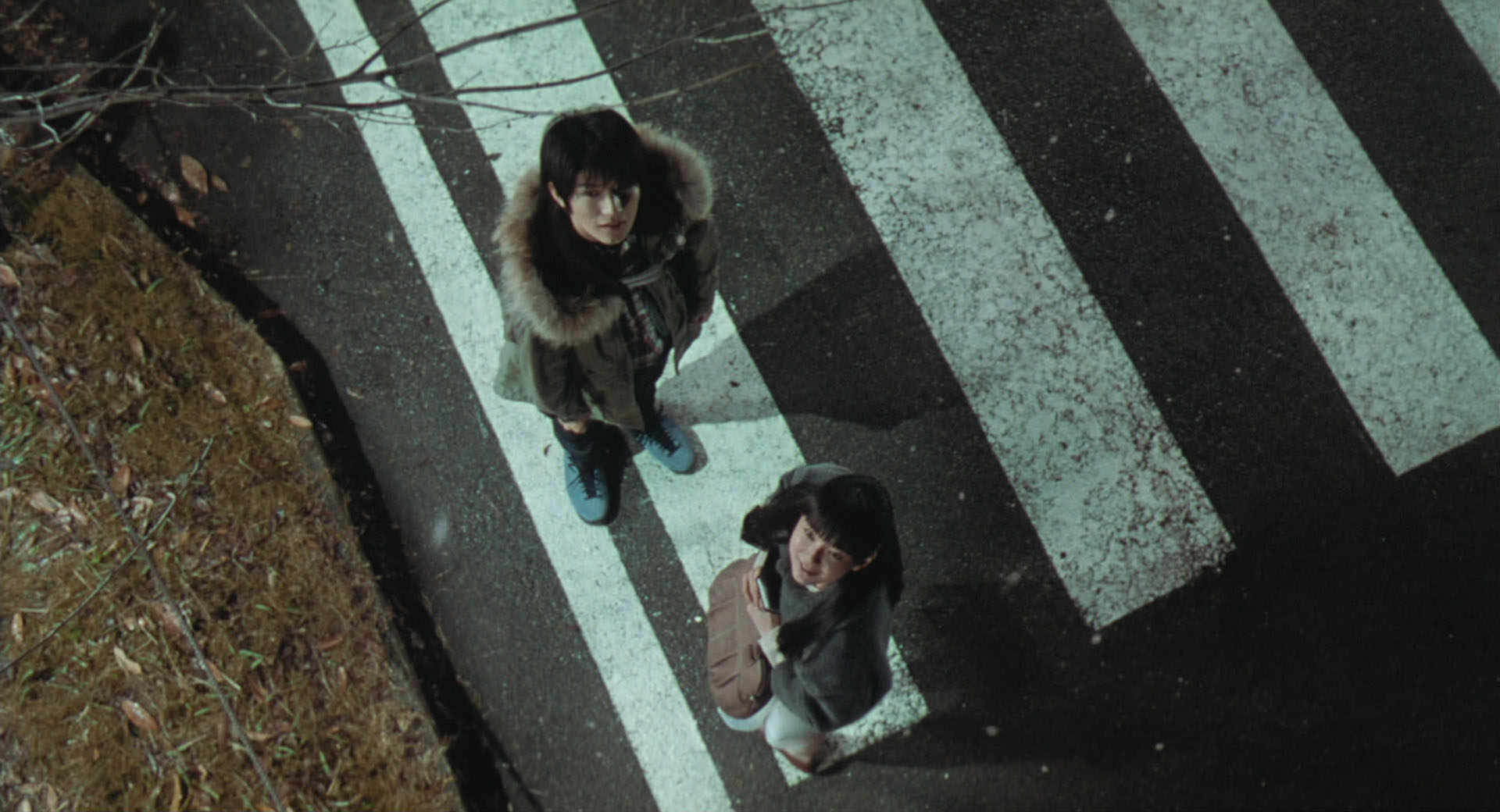
Based on the romantic manga “Kimi no Todoke”, “From Me to You” tells the story of the relationship between two very different classmates.
Sawako Kawamura’s classmates avoid her due to her name and gloomy appearance that reminds them of Sadako, from the popular J-horror film “Ringu”. They even go so far as to call her Sadako. However, she has nothing to do with their opinion of her, since she is a very kindhearted but timid girl who cares too much about others.
Shota Kazehaya, on the other hand, is very popular and outgoing. The two of them eventually become friends, and Shota helps Sawako interact with her classmates. With his assistance, she manages to make a few friends. Furthermore, both of them have feelings for each other, although they are too afraid to express them.
Things become more complicated when Kazehaya’s old friend Ume confesses her feelings toward him to Sawako and asks for her help.
Naoto Kumazawa directs a drama-charged tale of teenage romance that mainly targets the schoolgirl audience. The visuals of the film are magnificent, with elaborate cinematography that includes wonderful shots both in school and outside of it.
Lastly, both of the protagonists (Mikako Tabe as Sawako and Haruma Miura as Shota) give adequate performances, staying close to the characters of the original.
19. Himizu (Sion Sono, 2011)
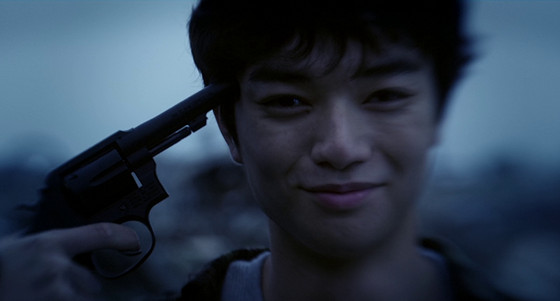
Sion Sono was deeply touched by the nuclear incident in Fukushima and thus decided to adapt the homonymous manga by Minoru Furuya, although he strayed quite a bit from the original.
Yuichi is an adolescent who made a bet with himself to try to be a normal person, despite the crazy world he lives in. Unfortunately, he seems to lose the bet, mainly because his parents, a drunk and a prostitute, tend to make his life a living hell. After experiencing a life-altering incident, he transforms into a devious individual and his fate of becoming either suicidal or a murderer grows closer than ever.
The only person who seems determined to prevent this is Keiko, a girl from an equally decayed family who is in love with him.
Accompanying them are many other homeless individuals, whose lives are in ruins due to the earthquake, the tsunami and the ensuing radiation brought on by the incident on March 11, 2011.
Sono places his protagonists in a dystopian, post-quake Japan, while using Yuichi to symbolize the perverse reality of his country in the modern age. This makes a very pointed remark about the previous generation; according to Yuichi, they are to blame for the current situation.
The performances from protagonists Shota Sometani and Fumi Nikaido and the mortifying finale are the film’s best assets.
18. Crows Zero (Takashi Miike, 2007, 2009)
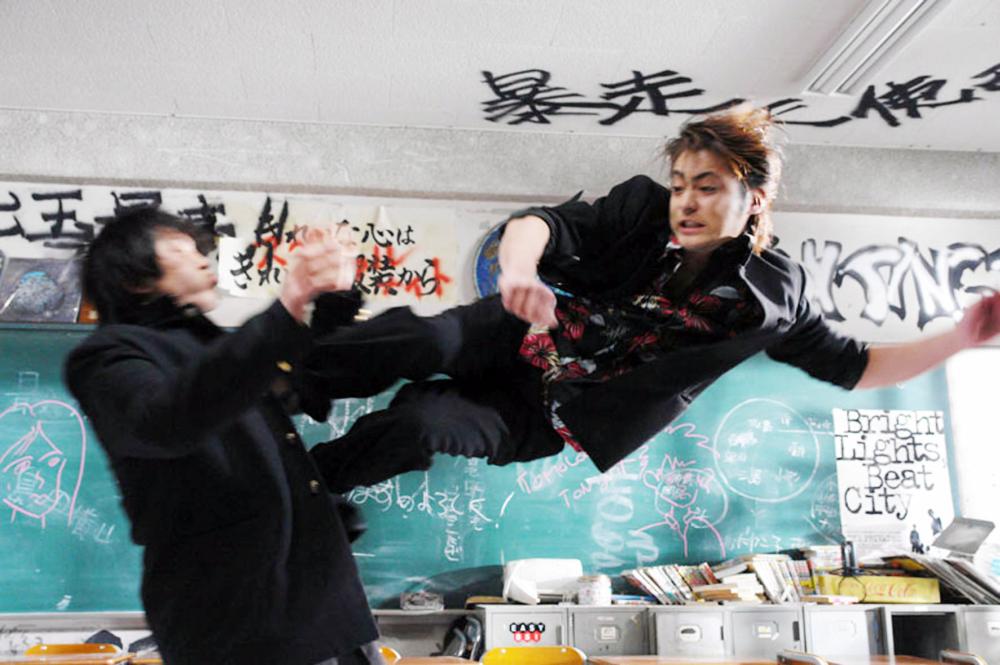
Based on the manga series “Crows” by Hiroshi Takahashi, “Crows Zero” is actually a trilogy, with Takashi Miike directing the first two parts and Toshiaki Toyoda the last, which is the most “weak”. This entry is about the first two.
Suzuran High school, also known as” School of Crows”, is considered the most violent school in Japan. Gangs of students fight constantly with the ulterior motive of dominating the school, something that has yet to happen in the the school’s long history.
Currently, the number one fighter at the school is Tamao Serizawa, also known as “King of Beasts”, who is very close to achieving his goal. However, Takiya Genji, the son of a Yakuza leader, makes his appearance, and his father has promised him his position in the organization if he manages to take over the school.
In the second film, Suzuran has to fight against another “tough” school called Hosen.
Miike managed to retain the violent and slapstick humor nature of the original medium, additionally presenting a number of astonishing fighting scenes, with the final ones of each movie standing out the most.
Scenes like the one involving human bowling are a distinct example of the elaborate special effects and the production values in general, in one of the most entertaining films regarding delinquents.
17. Death Note (Shusuke Kaneto, 2006)
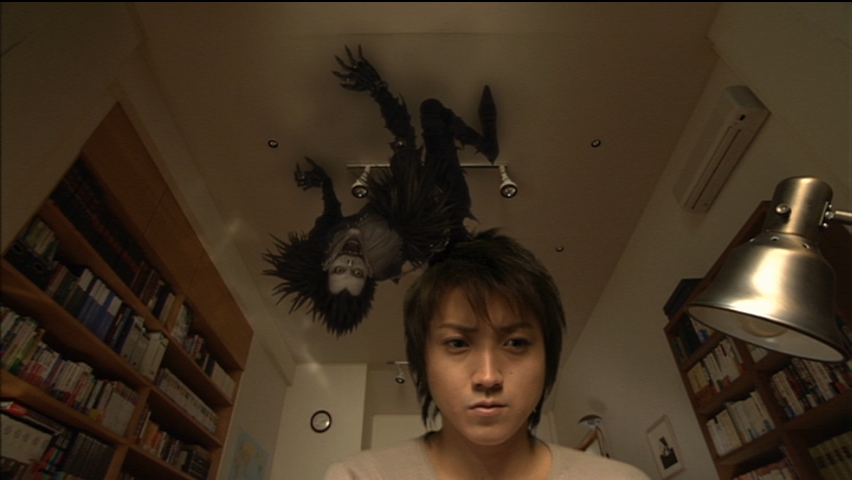
Based on the homonymous manga by Tsugumi Ohba and Takeshi Obata, “Death Note” is the most commercially successful title on this list, having spawned video games, light novels, an anime series, a two-part film, a spin-off movie, and a new film is scheduled to screen this October. This entry is for the first two films.
The story follows Yagami Light, a student who discovers a notebook that when someone writes a name of someone in it, this individual dies after a few days. L is a world-renowned detective, part of an international anti-terrorist group who is trying to stop Light. The presence of Shinigamis (Gods of Death), the involvement of Light’s father in the task force that tries to stop him, and an idol named Misa who also receives a notebook, complicate matters.
Shusuke Kaneto managed to retain most of the manga’s aesthetics, particularly with the help of special effects that wonderfully portrayed the Shinigamis, the most difficult aspect of the original. Apart from that, the script is so elaborate and addictive that all he had to do is stay close to the source material, something he achieved with flying colors.
16. Gantz (Shinsuke Sato, 2011)
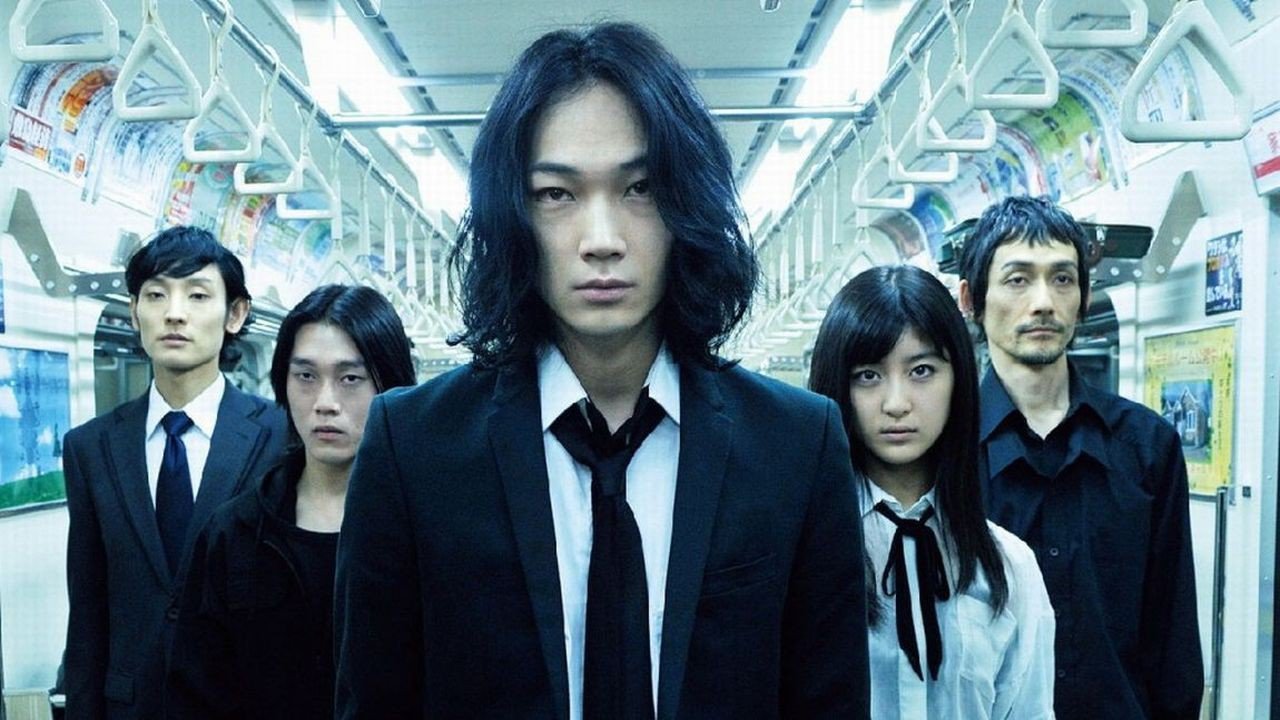
Based on the violent manga by Hiroya Oku, “Gantz” is another title that was screened in two parts.
Two classmates, Kurono and Kato, are killed while trying to save a homeless person who had fallen on the subway rails. After their death, they find themselves in an apartment, where a man cabled inside a black sphere forces them to participate in a death game, where they have to kill particular targets if they want to survive.
Shinsuke Sato retained the surreal atmosphere of both the manga and the anime, although he almost completely excluded the sexual aspects and many of violent ones as well. Visually, the film stayed very close to the original, with the help of magnificent special effects and cinematography.
Overall, this is good sci-fi action film, although it doesn’t have much to do with the gore and sex nature of the manga.
15. Lady Snowblood (Toshiya Fujita, 1973)
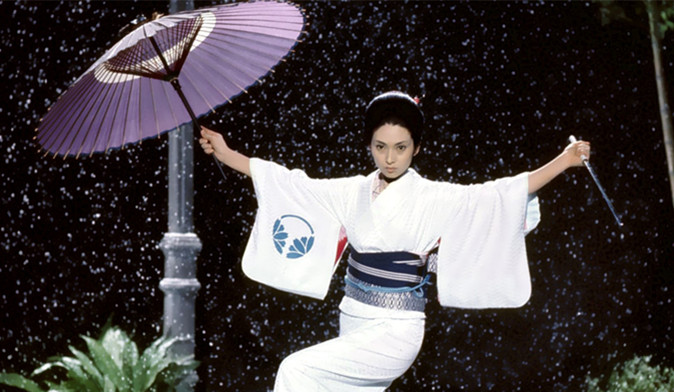
Based on the homonymous manga by Kazuo Kamimura, “Lady Snowblood” begins with Kitahama Okono, Takemura Banzo, Shokei Tokuichi and Tsukamoto Gishiro assaulting a family, killing the husband and the son and raping Sayo, the wife. The rape continues for three days until Shokei brings her to Tokyo to be his concubine. However, Sayo eventually manages to kill him, an action that leads her to imprisonment.
Sayo has nothing but revenge on her mind, and she ends up having sex with every guard that comes her way in an attempt to conceive a powerful son, who will exact revenge in her stead. Eventually, one of them impregnates her; however, she delivers a girl and dies during childbirth. With her last breath, she forces her fellow inmates to promise they will tend to the infant and that they will grow her up to take revenge in her stead.
Six years later, one of them hands over the little girl to a monk named Dokai, who trains her in swordsmanship and martial arts. After she completes her training, Yuki renames herself to Lady Snowblood and sets out on the path of revenge.
Toshiya Fujita did a great job adapting the manga, maintaining its exploitation themes, great battles, and overall violence.
Fujita directs this movie and particularly excels in one aspect: He lets Meiko Kaji, the protagonist and one of the priestesses of the 70’s exploitation, shine with her presence, and she delivered in the most astonishing fashion, with her “cold beauty,” scarce words and great facial expressions, actually giving a face to the whole revenge concept.
14. Sakuran (Mika Ninagawa, 2006)
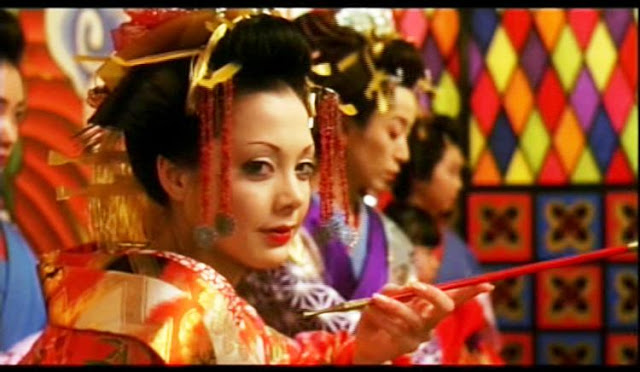
Based on the homonymous manga by Moyoco Anno, this film takes place in 18th century Edo, in the red-light district of the city called Yoshiwara. In that district, the most prestigious category of courtesans is called “Oiran”, with a whole protocol in place just for someone to meet them.
The film revolves around Kiyoha, who is sold in one of the most renowned “houses” of the area. The girl stands apart from the beginning due to her bad manners, her disregard for rules and her overwhelming ambition. The script follows her ascent from an ugly kid to the most famous Oiran of Yoshiwara.
The film stands apart for its astonishing production values, including the cinematography, costumes, set design and makeup, with vivid colors flooding every scene, resulting in a plethora of magnificent images.
Anna Tsuchiya is fantastic as the protagonist, taking full advantage of her gorgeous appearance and imposing voice to accurately present an arrogant though disillusioned and sad character.
Of equal value is the music by Shiina Ringo, with the song “Oiran” standing apart, as is the case with the scene where it is heard.
13. As the Gods Will (Takashi Miike, 2014)
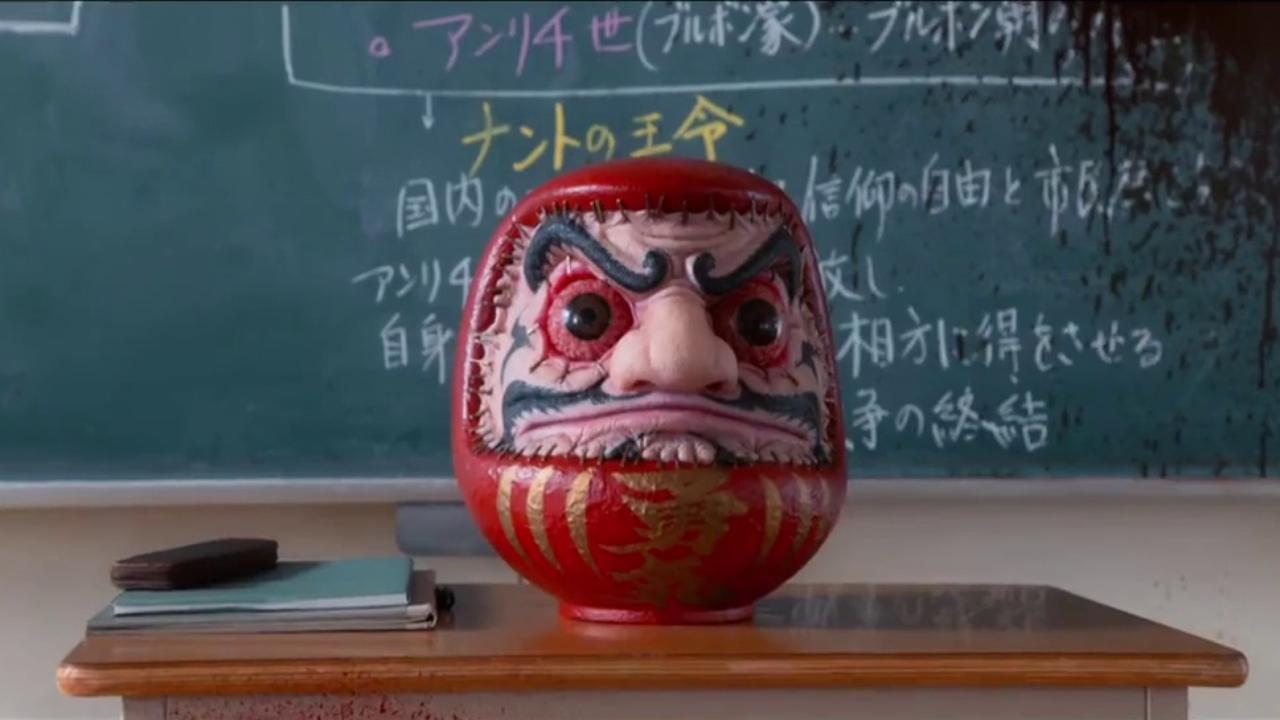
Based on the homonymous manga by Muneyuki Kaneshiro and Akeji Fujimura, the film tells the tale of three students who are caught, along with a number of other students, in a deadly and preposterous game.
Takashi Miike does not delay at all in this film, as in one of the first scenes, we watch bored student Shun Takahata entering a classroom, where a Daruma Doll is sitting atop the teacher’s desk, playing a deadly edition of “Red light, green light, 1-2-3.” The students who lose explode in a bloodbath that fills the place with red marbles.
As the scene progresses, he and the remaining students realize that this is a trial of sorts, although an utterly unfair one. A while later, Shun meets one of his friends, Ichika, who has also survived a similar massacre and the two of them proceed to the gym, where another trial is waiting, this time from a giant cat. While running for their lives, they meet Amaya, a cold and dangerous student who eventually accompanies them to a giant cube flying over Tokyo, where additional trials expect them.
Miike directs a paranoid film that plays out as a video game, with the protagonists having to overcome trials in order to progress to the next stage. However, the fact that those trials are presented by dolls that came to life (as the one with the Matryoshka Dolls, in a hilarious concept), the permeating slapstick humor and omnipresent bloodbaths take the film in a whole other direction, similar to the usual Miike aesthetics.
The film entails great special effects, with elaborate CGI and animation, particularly on the toys. The cinematography is of equal quality in all the splatter scenes, and the blood looks very real.
12. Ichi the Killer (Takashi Miike, 2001)
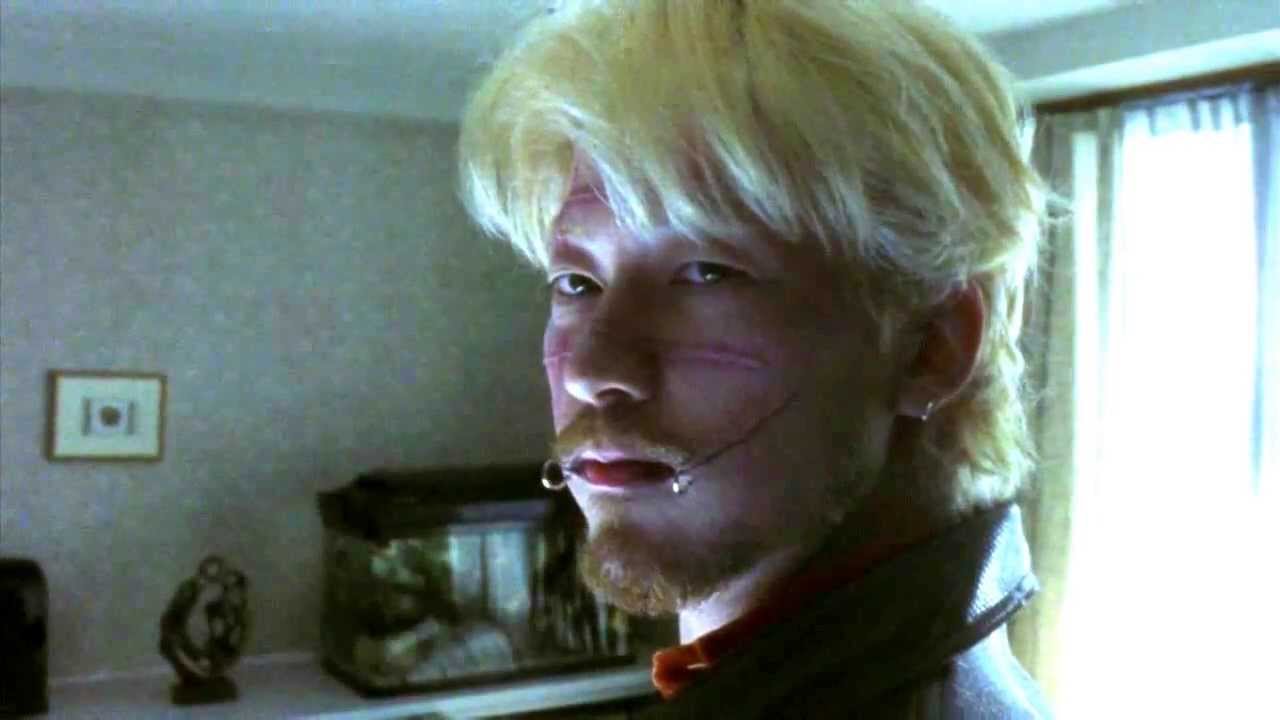
If there is one certainty about the adaptation of the homonymous, paranoid manga by Hideo Yamamoto, is that the equally paranoid Takashi Miike is the only one who could adapt it so similarly to the original.
The leader of a Yakuza family disappears under mysterious circumstances and his subordinates believe that he was murdered. Kakihara, his second in command, miffs at the incident and is intent on extracting revenge. However, Kakihara is not your regular violent Yakuza.
On the contrary, he is a schizophrenic, sadomasochistic misanthrope, irrevocably in love with his boss, who enjoys inflicting as much as receiving pain. Accordingly, when he receives information that the perpetrator is the boss of a rival gang, he proceeds to capture and interrogate him, in his own uniquely violent way.
Nevertheless, the culprit is not a gangster, but a lonesome vigilante named Ichi, who works under the directions of a mysterious individual. The situation takes a turn for the worse when he orders him to wipe out Kakihara’s gang.
Miike captured the perverse and onerous nature of the original, managing to accurately depict characters that seem to enjoy inflicting and receiving pain, while not even one of them is even remotely good. In the same fashion, the film includes a number of extremely violent scenes that even reflect on a sexual level.
Tadanobu Asano as Kakihara and Nao Omori as Ichi are great in their roles in complete exploitation style, while the film also features directors Shinya Tsukamoto and Sabu, and cult figures Susumu Terajima and Jun Kunimura.
11. Pecoross’ Mother and Her Days (Azuma Morisaki, 2013)
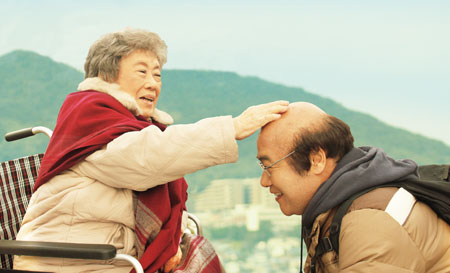
The script is based on the autobiographical manga by Yuichi Okano, which was inspired by his visits with his own senile mother. The names of the original characters were kept in the film.
Yuichi Okano is a widower who works as a magazine sales rep and lives in Nagasaki with his demented mother, Mitsue, and his son, Masaki, who works in a restaurant. His nickname is Pecoross, which is a small onion that was given to him because his bald head looks like one.
He passes his days caring for his mother, drawing manga, and playing his guitar in bars, thus neglecting his actual job. His mother’s dementia started 10 years before, upon his father’s death, but has deteriorated rapidly the last years, an issue of great concern for Pecoross, who is reluctant of assigning her to a care home.
However, after he discovers that she hides her dirty underwear in the drawers and wanders around attempting to buy sake for his late father, he decides to commit her.
Azuma Morisaki directs a film that starts as a happy-go-lucky comedy, but quickly becomes a family drama, particularly after Pecoross commits his mother to the care home. Through a number of flashbacks, he presents the heartbreaking story of Mitsue, who grew up in a very poor family of 10 in Nagasaki and lost some of her siblings to sickness and the atomic bomb. Even when she left, after her marriage, she had to endure her husband’s raging alcoholism and subsequent neurosis.
The aforementioned are presented in order to show the reason Pecoross cares so much for his mother, since he acknowledges the hardships in her life and how she struggled to raise him.